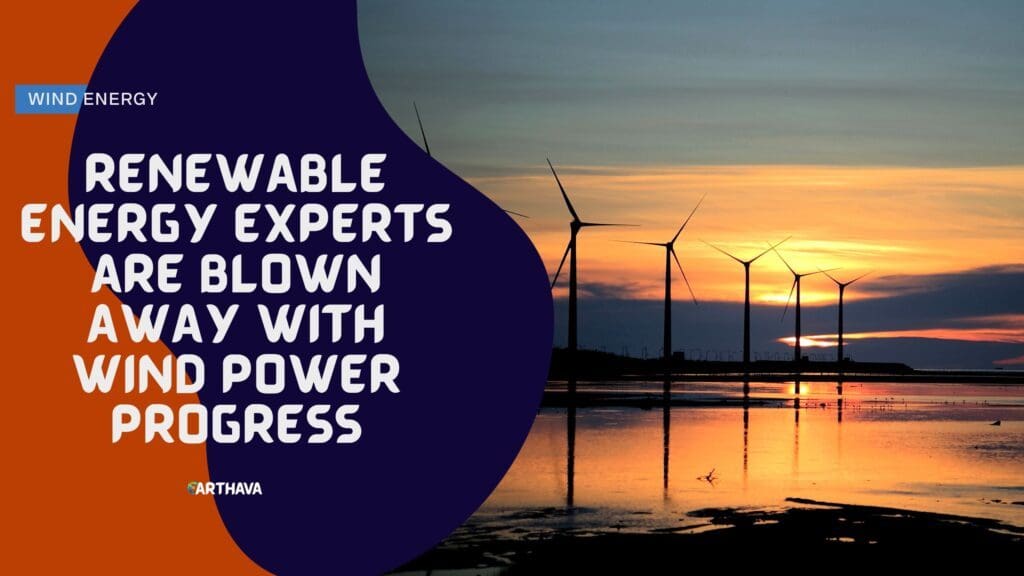Of all the renewable energies becoming available in the modern world, wind power by far is leading the charge. In 2017, wind power production finally overtook many other forms of renewable and fossil fuel energy around the world.

What might the next evolution of wind energy look like? Where could we see wind turbines appearing next? Offshore wind farms are certainly becoming popular, but how have onshore projects flourished in the past year? Here’s how onshore wind farms have made a difference in 2017, both in the U.S. and around the globe:
Domestic Wind Energy
Despite the consistent promises of President Trump to revitalize the coal mining industry, research suggests that renewable energies are the way of the future for both U.S. energy needs and the job market. Just in wind energy alone, over 102,000 jobs were created in 2016 (a 25 percent increase from 2015) compared to about 1,500 in the coal mining industry in 2017 (according to BLS data). Additionally, the jobs that are being created in wind energy range from environmental engineers to civil engineers, to maintenance workers, providing a variety of opportunities for workers with different backgrounds and experiences.
All of these new jobs have led to a massive increase in turbine construction and energy production. In the U.S., projects to construct new wind turbines skyrocketed, and their electrical production overtook hydroelectric energy in 2016 to become the top renewable energy source and the fourth largest overall. However, it’s not just utility companies that are signing up for wind farm energy. Everything from universities to tech companies, and even Fortune 500 companies are interested in wind power.
Innovation within the industry — as well as the massive amount of construction that has happened over the past 2 to 3 years — has helped lower the cost of wind energy, providing an affordable (and environmentally friendly) alternative for these corporate industries. One of the main draws besides the cut down on emissions is the long-term contracts that these corporations can sign with wind farms, which protects them from fluctuating prices. In 2015 alone, about half of the overall contracts signed for wind energy came from these corporations, cities, and universities.
As the American Wind Energy Association (AWEA) stated in April 2016 in their research:
“Corporate buyers who signed [power purchase agreements] PPAs in 2015 include large brick-and-mortar operations such as Walmart and Dow Chemical, as well as hi-tech firms such as Google Energy, Amazon Web Services, and Salesforce. They join a growing list of cities – including Washington, D.C. – and academic institutions, such as Cornell University and Oklahoma State University, which have signed wind energy PPAs. In all, over 70 organizations make up this class of emerging customers that have invested in specific wind projects either through long-term contracts or direct ownership.”
The AWEA noted that corporate and non-utility buyers are “the most rapidly growing customer class” for wind projects, and in the third quarter of 2017 six large corporations signed PPAs, including T-Mobile and Tesla. Despite the shifting interests of the federal government, renewable wind power is still seeing a tremendous burst in construction, production, and interest.
Additionally, the state that has invested the most in wind energy as of 2017 is Texas. The AWEA noted in April of 2017: “Texas is the undisputed leader in wind energy, with approximately three times more wind generating capacity than any other state and nearly a quarter of American wind jobs.”
As the Lone Star State continues to grow in wind production, the interest is slowly spreading to other states in the Midwest and Central U.S. Although offshore wind farms are certainly popular on the East Coast, the construction happening in the Midwest made up 89 percent of new developments during 2016. In the end, this provides the Midwest with a unique and rare advantage: the ability to create jobs, attract corporate buyers, and lead in innovation for wind technology.
Global Wind Energy
However, the United States is still far behind many other renewable energy leaders around the world. Efforts in Europe and China trump those being made on U.S. soil, and the European Union is setting standards that could set the stage for a completely renewable future.
Despite the United Kingdom’s effort to depart from the EU, the UK parliament and members of the EU have made mutual efforts to ban all use of coal electric power by 2025, with the hope to replace that electrical need with more wind and other renewable energy. The UK also celebrated its first coal-free day since the Industrial Revolution on April 21, 2017.
However, in an interesting twist, there is still a unique need for coal and fossil fuel production in Europe. In Germany, for example, the country is making an active effort to close out its nuclear energy plants and replace them with safer energy options. To help make the transition, coal is being used to shift between nuclear and renewable energy sources. Coal is acting as a backup for where renewables fall short.
Despite this, the coal industry has received a major blow in Europe as they pledge to make this transition. Already, in Denmark, wind turbines provided the country with a whopping 43.5 percent of its overall electrical power in 2017, and the country hopes to make it 50 percent by the end of 2020. Part of this move is thanks to the creation of the North Sea Wind Power Hub (also known as Dogger Island) in the North Sea above Denmark, the Netherlands, and east of the U.K.
Outside of the EU, wind energy is seeing a boost in Australia and China. Both are making efforts to not only build farms but also work on creating generators and long-lasting batteries to preserve excess electricity. In Tunisia and Northern Africa, there is also an increased interest in wind energy. One company, Tyer Wind, has created a new style of wind turbine inspired by hummingbird wings. This new biomimicry innovation could lead the way to a more economically sustainable and efficient form of wind turbine.
2017 and the Turning Point for Wind Energy
Data on the overall impact wind energy had in 2017 is still being collected, but there’s no doubt that the year was a major one for wind power. Major corporate buyers continued to invest and rely on this sustainable energy, and the job market in both the U.S. and Europe flourished because of it.
As wind energy continues to evolve and grow, 2017 could be seen as a second industrial revolution: the year that wind farms took over energy production. No amount of economic or political pressure can turn the tide of wind power.


